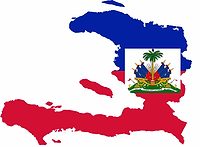Case Study
Major Restoration Gives Island Villa ‘Landmark’ Status
Blue metal roof on the island of St. John gives home damaged by Hurricane Irma new life

Irma started as a tropical wave that left the west coast of Africa on August 27, 2017. It became a tropical storm on August 30, 2017, and a Category 5 hurricane on September 6, 2017, when it made landfall in Barbuda.
Irma's sustained winds reached 185 mph at its peak, making it the strongest hurricane ever recorded in the open Atlantic.
— Images courtesy of Pac-Clad; photos by Steve Simonsen
A villa on the beach of Great Cruz Bay on the island of St. John in the U.S. Virgin Islands has gone from eyesore to landmark thanks to a major restoration following Hurricane Irma's direct hit on the Caribbean island in 2017.
The storm severely damaged the home’s roof, which was already in need of structural repair, and underscored the need to seal in its largely open-to-the-elements floor plan more securely. The finished result makes the most of the stunning location — the owners have rechristened the place “C’est la Sea” — “It is the Sea,” in English — which could be any Francophone’s utterance upon arrival.
Its new, blue metal roof stands out against the island’s green hills, making the home a navigational aid and spawning a raft of imitators.
David and Gina Gloski were already regular visitors to St. John when, just six months after the hurricane had struck, they visited the property that would become theirs — almost on a whim.
“On the way down here, on the plane, I hit the internet to see what was available, and this house was available,” David Gloski said. We knew of this property because we almost rented it once. And so, during our visit, we saw it, and a couple of pieces fell into place, and six months later, we owned it.”

While the home had already been mostly secured against the elements, the previous corrugated aluminum roof needed repair. Additionally, the couple wanted glass windows that previously had only louvered shutters with screens for protection (many of them even lacked screens). This lack of protection had earned the place some negative reviews thanks to mosquito and gecko intrusions. Finally, they also wanted to enclose and roof over the adjacent pool area that had been open to the kitchen to help deal with temperature control in the tropical region.
The roof required structural work before further efforts on it could proceed. Over the years, portions of the roof had sagged. This meant the local contractor, Nathan Visel, had to jack up a couple of corners and square the structure before dealing with decking and new roof panels.
The overall roof design followed the pattern of what had previously been in place, adding a membrane roof over the pool with a slight slope to direct rainfall to a drain. This led to an in-house cistern supplying much of the home’s water. But following an existing design didn’t mean Visel’s job was easy.
The plan required extensive factory pre-cutting to create the pagoda-style layers of slopes and cupolas, so ensuring that measurements were correct was key. And, with the skilled worker shortage common in such a remote and pricey location, Visel did much of the installation work himself during hot and humid weather conditions, adding to the project’s challenges.
The Gloskis turned to Petersen as the primary roofing supplier, ordering 4,400 sq. ft. of the company’s PAC-CLAD Snap-Clad roofing panels in Interstate Blue. The choice reflected the owners’ preference for bold colors and desire to give their home a new start in the vacation market, as it’s rented for up to six months each year.
“It’s an iconic place on the island, so we just wanted to give it kind of a stamp of color, kind of as a landmark for people,” Gloski said, noting the choice has caught on among other owners in the area. “Probably a dozen or so other homes on the island have either the same color or something close, so we kind of started a little trend with the color.”
Petersen, a Carlisle company, manufactures PAC-CLAD architectural metal cladding systems in multiple gauges of steel and aluminum. PAC-CLAD products include hidden- and exposed-fastener wall panels, standing seam roof panels, flush- and reveal-joint wall panels, vented or solid soffit panels, perforated metal, coil and flat sheet, composite panels, column covers, and fascia and coping.
The roofing system is available in a Kynar-based 70% PVDF Fluropon coating with 46 standard colors and 16 wood grain finishes, including a 35-year finish warranty. Most colors meet LEED requirements and are rated by the Cool Roof Rating Council; custom colors and weather-tightness warranties are offered. BIM and CAD documents are available for most products.
Founded in 1965, Petersen has facilities in Illinois, Georgia, Texas, Maryland, Arizona and Washington. For information, visit pac-clad.com.
Looking for a reprint of this article?
From high-res PDFs to custom plaques, order your copy today!





